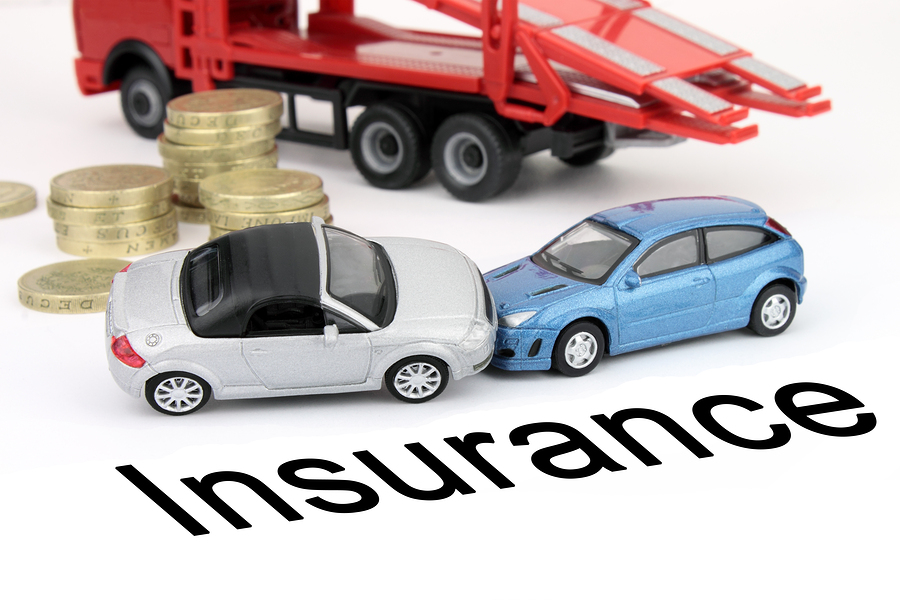Navigating the World of Car Insurance A Comprehensive Guide
Owning a car comes with a plethora of responsibilities, and one of the most crucial aspects is securing adequate car insurance coverage. This comprehensive guide aims to demystify the intricate realm of car insurance, empowering you with the knowledge to make informed decisions and safeguard your investment.
In today's fast-paced world, where automobiles have become an indispensable part of our daily lives, the importance of car insurance cannot be overstated. It not only protects you from financial burdens in the event of an accident or theft but also provides peace of mind while navigating the roads. With a multitude of options and factors to consider, understanding car insurance can seem like a daunting task. However, with the right information at your disposal, you can navigate this realm with confidence and ease.
Types of Car Insurance Coverage

Car insurance policies typically offer various types of coverage, each designed to address specific risks and scenarios. Understanding these coverage options is the first step towards tailoring your insurance plan to meet your unique needs.
Liability Coverage
Liability coverage is often mandatory in most states and is divided into two categories:
- Bodily Injury Liability:
- Covers medical expenses and legal costs if you're found responsible for injuries to others in an accident.
- Typically includes coverage for the policyholder and any listed drivers on the policy.
- Property Damage Liability:
- Covers the cost of repairing or replacing another person's vehicle or property if you're found legally liable for the damage.
- This coverage can also extend to cover damage to structures, such as fences or buildings.
Collision Coverage
Collision coverage pays for the repair or replacement of your vehicle if it is damaged in a collision with another vehicle or object, regardless of who is at fault. This coverage is typically optional but highly recommended, especially for newer or more valuable vehicles.
Comprehensive Coverage
Comprehensive coverage, often referred to as "other than collision" coverage, provides protection against non-collision-related incidents. This includes:
- Natural disasters (e.g., hail, floods, earthquakes)
- Theft
- Vandalism
- Animal collisions
While not legally required, comprehensive coverage can be a valuable addition to your policy, particularly if you live in areas with a higher risk of weather-related incidents or vehicle theft.
Uninsured/Underinsured Motorist Coverage
This coverage protects you if you're involved in an accident with a driver who has insufficient or no insurance to cover the damages. It can help cover medical expenses, lost wages, and other related costs for you and your passengers.
| Coverage Type | Description |
|---|---|
| Uninsured Motorist Bodily Injury | Covers medical expenses if you're hit by an uninsured driver |
| Underinsured Motorist Bodily Injury | Covers medical expenses if you're hit by a driver with insufficient insurance |
| Uninsured Motorist Property Damage | Covers damage to your vehicle if you're hit by an uninsured driver |
Personal Injury Protection (PIP)
Personal Injury Protection, also known as "no-fault" coverage, is required in some states and optional in others. It covers medical expenses, lost wages, and other related costs for you and your passengers, regardless of who is at fault in an accident.
- Covers medical expenses, lost wages, and other related costs
- May also cover funeral expenses in the event of a fatal accident
- Coverage limits and specific inclusions vary by state and policy
Factors Affecting Car Insurance Rates

While the types of coverage are essential to understand, it's also crucial to be aware of the factors that can influence your car insurance rates. These factors play a significant role in determining the premiums you'll pay for your policy.
Driving Record
Your driving history is one of the most significant factors that insurance companies consider when setting your rates. A clean driving record with no accidents, tickets, or violations can result in lower premiums, while a history of infractions or accidents can lead to higher rates or even policy cancellation.
Age and Experience
Age and driving experience are closely related factors that impact car insurance rates. Generally, younger and less experienced drivers are considered higher-risk and are typically charged higher premiums. As drivers gain more experience and reach a certain age, usually around 25, their rates may decrease.
Vehicle Make, Model, and Age
The type of vehicle you drive also plays a role in determining your car insurance rates. High-performance or luxury vehicles are typically more expensive to insure due to higher repair costs and increased theft risk. Conversely, older or more economical vehicles may qualify for lower rates.
Credit Score
While it may seem counterintuitive, your credit score can influence your car insurance rates in many states. Insurance companies often consider individuals with lower credit scores as higher risk, which can result in higher premiums.
Location
Your geographic location, including your state, city, and neighborhood, can impact your car insurance rates. Areas with higher rates of accidents, theft, or vandalism may lead to higher premiums, while rural or low-risk areas may have lower rates.
Deductibles
A deductible is the amount you agree to pay out-of-pocket before your insurance coverage kicks in. Generally, higher deductibles result in lower monthly premiums, while lower deductibles lead to higher premiums but lower out-of-pocket costs in the event of a claim.
Marital Status and Gender
While not as significant as other factors, your marital status and gender can also affect your car insurance rates. Married individuals and women tend to have slightly lower rates than their single or male counterparts, as they are perceived as lower risk by insurance companies.
Shopping for Car Insurance

With a plethora of insurance companies and policies available, shopping around is crucial to finding the best coverage and rates for your unique circumstances.
Comparing Quotes
One of the most effective ways to find the best deal on car insurance is to compare quotes from multiple insurers. Many insurance companies offer online quote tools or agents who can provide customized quotes based on your specific needs and driving history.
Bundling Policies
If you have multiple insurance needs, such as home, life, or renters insurance, consider bundling these policies with the same provider. Many insurance companies offer discounts for bundling multiple policies, potentially saving you money while simplifying your insurance management.
Discounts and Loyalty Programs
Insurance companies often offer various discounts and loyalty programs to attract and retain customers. Some common discounts include:
- Multi-car discounts
- Good student discounts
- Defensive driving course discounts
- Loyalty or longevity discounts for staying with the same insurer
Be sure to inquire about available discounts and take advantage of any that apply to your situation.
Reviewing Coverage Periodically
As your circumstances change, such as a new vehicle, a change in marital status, or a move to a different location, it's essential to review your car insurance coverage periodically. These life events can impact your rates, and adjusting your coverage accordingly can help ensure you're adequately protected while avoiding overpaying for unnecessary coverage.
Understanding Insurance Terminology

Navigating the world of car insurance can be challenging due to the use of specific terminology. Here are some common terms you may encounter:
Premium
The premium is the amount you pay to the insurance company for your policy, typically on a monthly, semi-annual, or annual basis.
Deductible
The deductible is the amount you must pay out-of-pocket before your insurance coverage kicks in. Higher deductibles often result in lower premiums, while lower deductibles lead to higher premiums.
Liability Limits
Liability limits refer to the maximum amount your insurance company will pay for bodily injury and property damage claims if you're found legally responsible for an accident.
Claim
A claim is a formal request for compensation filed with your insurance company after an incident, such as an accident or theft.
Exclusions
Exclusions are specific circumstances or events that are not covered by your insurance policy, such as intentional damage or wear and tear.
Endorsements
Endorsements are additional coverages or modifications to your existing policy that can be added for an extra premium.
Maintaining Good Driving Habits
While having the right car insurance coverage is crucial, practicing good driving habits can also help reduce your risk and potentially lower your insurance rates over time.
- Obey traffic laws and avoid speeding or reckless driving
- Avoid distractions while driving, such as texting or using a phone
- Maintain your vehicle's maintenance schedule to ensure it's in good working condition
- Enroll in defensive driving courses to improve your skills and potentially qualify for discounts
- Be cautious and defensive, anticipating potential hazards on the road
By cultivating responsible driving habits, you not only increase your safety but also demonstrate your commitment to being a low-risk driver, which can positively impact your insurance rates in the long run.
Conclusion
Navigating the world of car insurance can be a complex and daunting task, but with the right knowledge and preparation, you can make informed decisions that protect your investment and providepeace of mind on the road. Understanding the various factors that influence car insurance rates, such as age, vehicle type, credit score, location, deductibles, marital status, and gender, is essential in securing the best coverage at the most competitive rates.
When shopping for car insurance, it's crucial to compare quotes from multiple insurers, consider bundling policies for potential discounts, inquire about available discounts and loyalty programs, and review your coverage periodically to ensure it aligns with your current needs. Familiarizing yourself with common insurance terminology can also help you navigate policy details with confidence.
In addition to having the right insurance coverage, maintaining good driving habits is key to reducing risk and potentially lowering your insurance rates over time. By obeying traffic laws, avoiding distractions, keeping up with vehicle maintenance, enrolling in defensive driving courses, and practicing defensive driving techniques, you can demonstrate your commitment to safety and responsibility on the road.
Overall, by staying informed, proactive, and mindful of your driving behavior, you can not only protect yourself and your vehicle but also make the most of your car insurance coverage. Remember, being a responsible driver goes hand in hand with having the right insurance protection, ensuring a safe and secure driving experience for years to come.